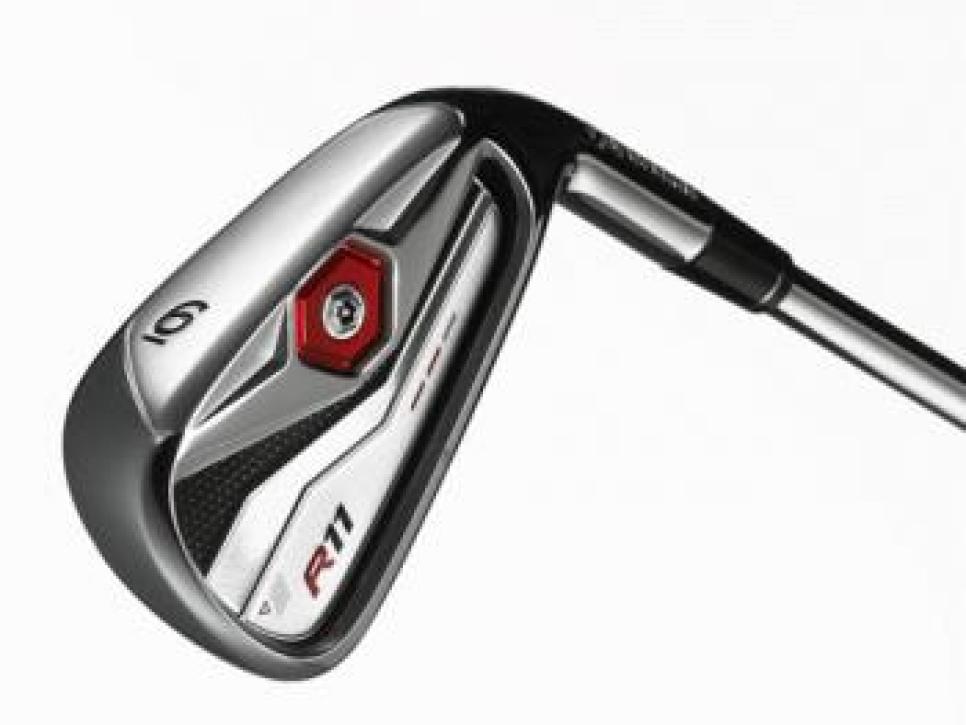News
TaylorMade R11 iron: Don't overlook the grooves
TaylorMade officially unveiled its new R11 irons today, a cast, progressive-sized iron that looks to combine the distance-enhancing technology of the Burner 2.0 iron (introduced last fall) with some of the player-focused looks and feel of the forged Tour Preferred line of irons (introduced this spring).

While it is not white, what might be most remarkable about this new iron is something that few are talking about anymore: the grooves.
The R11's technology includes meaningful talking points about several elements: The thin-faced design (just two millimeters thick on the 4-iron, for instance) includes the company's inverted cone in the face to improve off-center hit ballspeed. A weight port in the back of the undercut cavity allows for more precision in matching the proper head weights for consistency and the wide variety of shaft lengths and weights. The progressive-shaping of the design means the head shape, sole widths, topline thickness, offset and center of gravity locations change with each different iron in the set in an effort to optimize trajectory and spin.
But what TaylorMade's engineers have spent a significant amount of time on is the groove design, brought about by the USGA's decision to roll back groove effectiveness in 2008. The new stipulations reduce the sharpness of the groove edge radius and the total volume of grooves in an effort to reduce spin. Forced to reevaluate not only the design of a cast groove but the ability to consistently manufacture that design, TaylorMade's engineers say they've found a new idea that might be better than the old one on shots from the fairway.
"I contend the new grooves we've put on the R11 irons are better today than grooves were in the past because we know more now," says Bret Wahl, senior director of iron development at TaylorMade, who indicated the new groove design produces 16 percent more spin on a pitching wedge from the fairway than in the Burner 2.0 iron.
Wahl said that in the first few versions of grooves on cast irons that came after the new rule was implemented, manufacturers had to err toward produceability. He also said that clubs that have milled grooves, like forged irons, tend to have more precision built into the groove than can be achieved in cast design irons, which are made in much greater numbers.
"We've found edge radii to be the number one thing," he said. "Less than one-thousandth of an inch of difference can have the value of a thousand rpm of spin."
Wahl believes that if tour players were given the choice of the old, pre-groove rule groove and the new groove, they would opt for the new groove instead.
"Everybody plays by the same rules," Wahl said. "You have to push what can be done."
--Mike Stachura